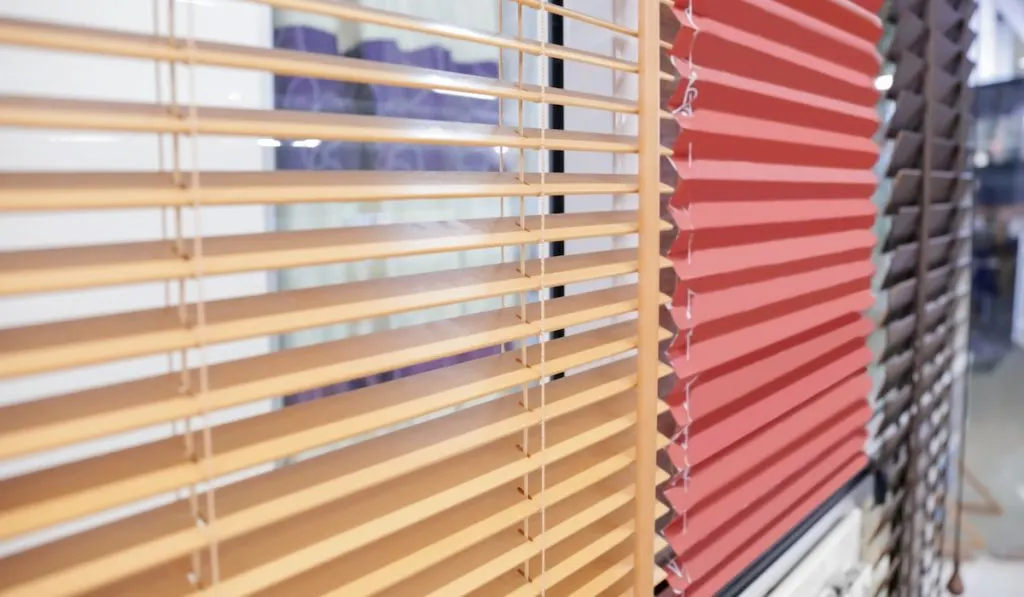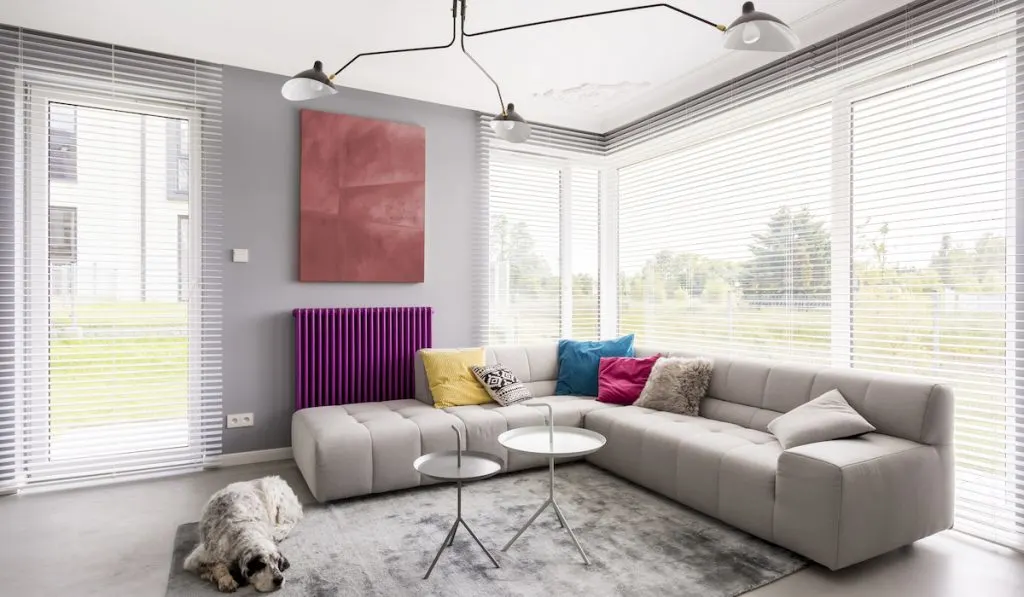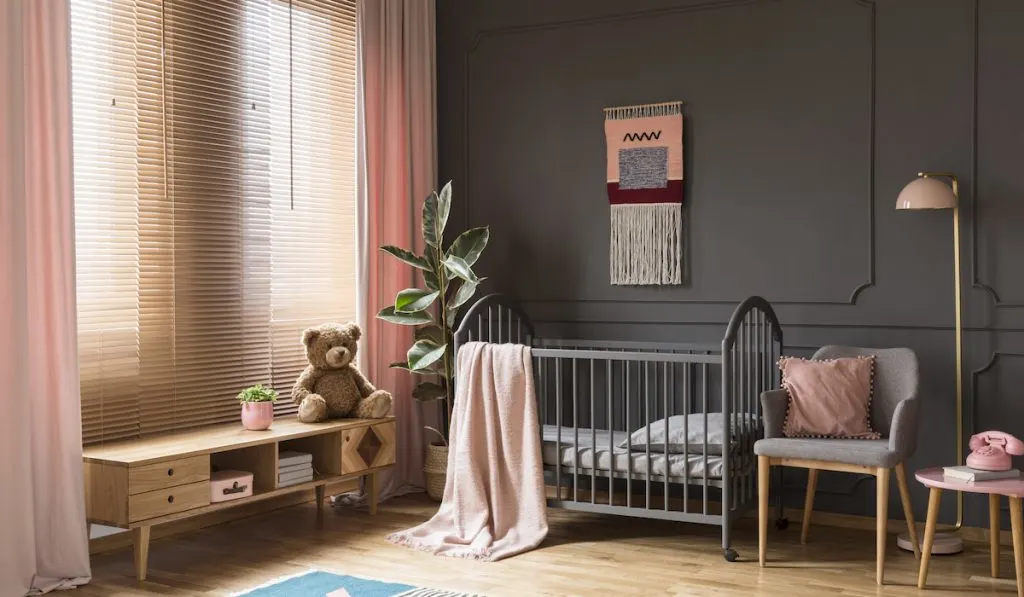The choice of blinds for your home is not something to decide on without careful consideration. They may be called blinds, but they are one of the deciding factors in the visual appeal of your home’s décor. So, if you get the selection wrong, you may not like the results you get.
Should all blinds in a house match?
All the blinds in a house do not necessarily have to match. The coordination that comes with the cohesion of having matching blinds is appealing, no doubt. But there are no fixed rules when it comes to designing with blinds.
Besides, every room in a house is different, and their difference can influence the type of blind to be used in them.
In this article, we answer various questions related to blinds matching and their selection in a house. We talk about fixtures blinds should match, what to consider when choosing them, and much more.

Should Blinds Be the Same Throughout the House?
Blinds should not necessarily be the same throughout the house.
While having matching blinds all over the house makes for cohesion that appeals to the senses, it is not compulsory. No rule says you must use matching blinds throughout the house. In fact, your choice of blinds for each section of your home may be determined by their layouts.
For one, if the rooms have different colors, using matching blinds everywhere may not be ideal.
Even if you cannot match the blinds throughout the house, you can create some coordination. For instance, you can use similar types of blinds across the spaces in your home. Say you install plantation shutters in the windows facing the garden while the patio doors get classic shutters.
Both types of blinds are not the same, but they are not too different. So, there is some cohesion between the patio area and the garden.
When trying to create coordination with blinds, as described above, choose your colors carefully. If the colors are not cohesive in any way, the spaces may look piecemeal.

Can You Mix and Match Blinds in the Same Room?
You can mix and match blinds in the same room. Under ideal circumstances, you should use identical blinds within a room. But in some situations, people opt for different types of blinds in the same room.
When mixing blinds in the same room, the most vital thing to consider is functionality. If the two types of blinds work well together, then you may go ahead with your plan.
One of many reasons people opt to mix blinds in the same room is to get privacy while retaining aesthetics.
For instance, one can use roller blinds and Venetian blinds in the same room. The roller blinds could be the option that matches the layout of the room for visual appeal. The Venetian blinds, on the other hand, could be the choice that offers control over privacy.
Another reason for mixing blinds in the same room is functionality. If you had to install blinds on the sliding door in a room, Venetian blinds are definitely not the ideal choice. So, you may have to opt for a better option like roller blinds. But in the same room, you may use Venetian blinds on the windows if you really want the privacy they offer.
In some cases, mixing blinds in the same room is just a personal choice or preference. They just do it because they want to.
All in all, it is always better to use matching blinds in the same room. But if you choose to mix the blinds, ensure the colors are not a mismatch. Else, you may end up with what looks like a patchwork.
Besides mixing blinds in the same room, you may also mix blinds and curtains. Mixing curtains and blinds in a room creates some dimension to the design while creating visual interest.

Should Blinds Be Lighter or Darker Than Walls?
Blinds can either be lighter or darker than walls. It all depends on what you are trying to achieve.
When the Blinds Are Darker Than the Wall
If you want the windows and blinds to have more presence in the room, make the blinds darker than the walls. Darker blinds accentuate the shape of windows and are more visible. This makes the windows more like a design feature in the space.
When the Blinds Are Lighter Than the Wall
If you want to brighten the room and extend its perspective, use blinds that are lighter than the walls. Lighter blinds create a contrast against the walls, adding some brilliance to the shade of the room. Apart from that, blinds of a lighter shade than the walls can make a small-sized room appear a tad wider.
When Considering the Size Ratio of Blinds to Walls
When choosing the shade of your blinds relative to the wall, you may consider the size ratio of the blinds and walls.
If the blinds are more extensive than the walls, and you want to integrate an indoor space with the outdoors, you may opt for lighter blinds.
Since the blinds are lighter, they will allow more light inside. This heightened transmission of light inside the house will leave the space having both indoor and outdoor ambiance.

What Should Blinds Match?
Blinds do not necessarily have to match anything in your home. But if you want them to, blinds can match the floors, the walls, or the window molding or trim.
Should Blinds Match the Floor or Walls?
The answer to this depends on what you want.
Matching Blinds With Walls
If you are trying to play it safe with the design of your home, then you can opt for blinds that match the walls. While this choice is failsafe, it is also somewhat stylish. For one, matching blinds and walls are particularly great for minimalist designs.
The use of similar tones for your blinds and walls creates a continuous appearance. The blind is either minimized or has the same visual hierarchy as the walls. So, there is no risk in the design.
Besides being safe, it is easy to transfer blinds that match walls to a new house. The downside is the design could be more.
Matching Blinds With the Floor
In some cases, people choose to match their blinds with wood flooring. They do this in two ways:
- They get wooden blinds with a similar tone and shade as their wood flooring.
- They get fabric blinds with color and texture that match their wood flooring.
The upside to using wood blinds alongside wood flooring is that this combination creates a consistent look. Apart from that, wood blinds offer some insulation in summer and winter.
Using wood blinds with wood flooring can also create a rich, warm look. They also offer a high degree of privacy and light control.

What to Consider When Choosing Blinds?
When choosing blinds, consider the following:
Safety
If you have children and pets around, you should opt for cordless blinds. Corded blinds are potentially harmful to children and pets because they can get tangled in the cords.
Apart from that, they can pull on the cords and cause the blind to come crashing down on them.
Your Interior Décor
This goes without saying, but your blinds should complement your interior décor. If you are going for a nature-themed or neutral design, look for blinds with subtle colors.
But if you want your interior design to be vibrant, opt for blinds with bold colors.
Privacy and Light Control
The level of privacy and light control you want in your space plays a part in the type of blinds you choose.
If you want to keep most of the light out and remain private, go for blinds made of opaque materials. Honeycomb shades and aluminum blinds are two examples of blinds that block the inflow of light and promote privacy.
If, on the other hand, you are unbothered by privacy and light control, blinds made with sheer fabrics would work for you.
Your Budget

Of course, you should also consider your budget when choosing blinds. The price of blinds is directly proportional to their size. So, the larger your windows, the more you may have to spend on the blinds.
If your budget is pretty buoyant, you may go for motorized, custom blinds. But if you would prefer less expensive options, go for ready-made or vinyl blinds.
Window Size
The dimensions of your windows are vital when choosing blinds. So, before going out to get blinds for your home, measure them. If you do not know how to measure the windows, find a professional to do it for you.
This goes without saying, but if the blinds you buy do not fit the windows correctly, they will not appeal.
Final Take
No interior design rule requires all the blinds in a house to match. In other words, you may choose to use or not use matching blinds throughout your home. In the same vein, while it is recommended to use matching blinds in the same room, you may choose to mix blinds in a room.
Resources
- https://www.tiptopblinds.com.au/do-all-your-window-coverings-need-to-match
- https://www.zebrablinds.com/blog/should-all-blinds-in-a-house-match-09-2020-38/
- https://www.abcblinds.com.au/blog/ask-abc-should-all-blinds-in-your-house-match
- https://www.blockoutblinds.com.au/use-different-styles-blinds-room/
- https://homedecorbliss.com/do-curtains-and-blinds-go-together/
- https://www.tiptopblinds.com.au/should-your-blinds-be-lighter-or-darker-than-your-walls
- https://www.lavishinteriorblinds.com.au/colour/should-blinds-be-lighter-or-darker-than-walls/
- https://www.blinds.com/blog/how-to-choose-a-blind-color
- https://www.sgwoodflooring.com/articles/how-to-match-blinds-colour-with-wood-flooring.html
- https://www.goodhousekeeping.com/home-products/a18315/blinds-and-shades-shopping-tips/
- https://www.centurianwindowfashions.com/blinds-shades-buying-factors/
